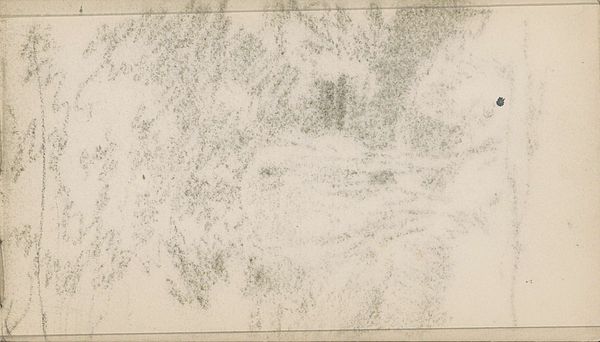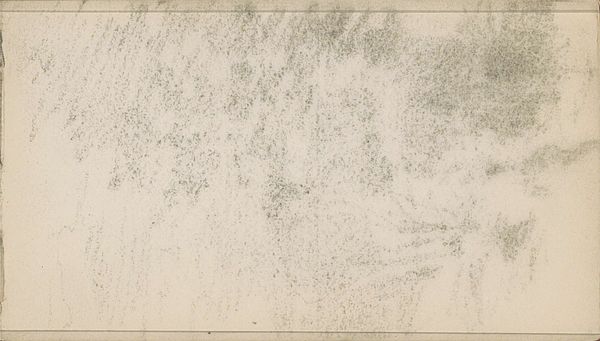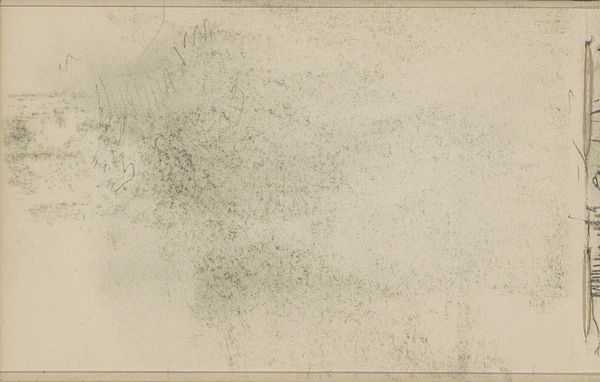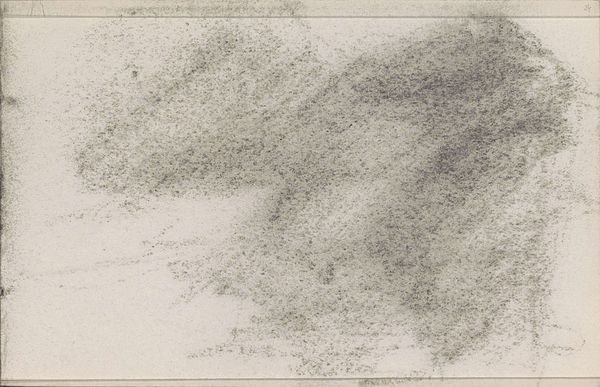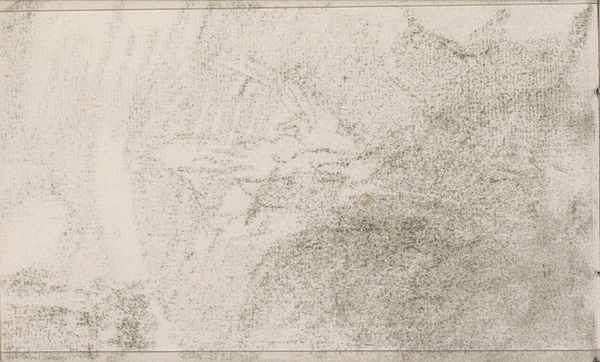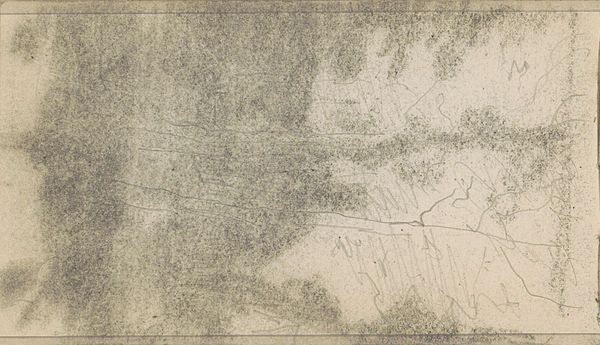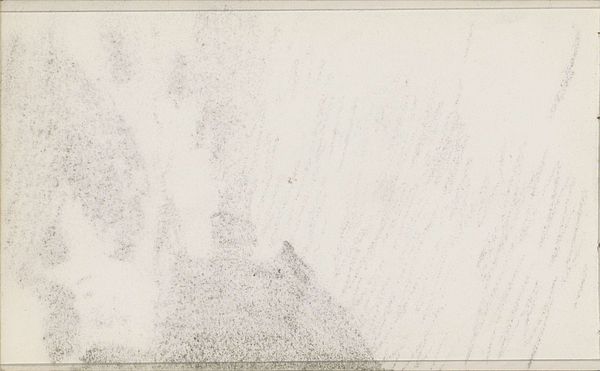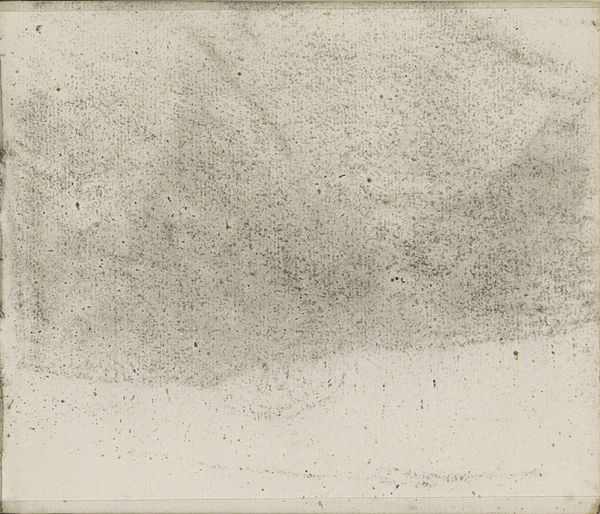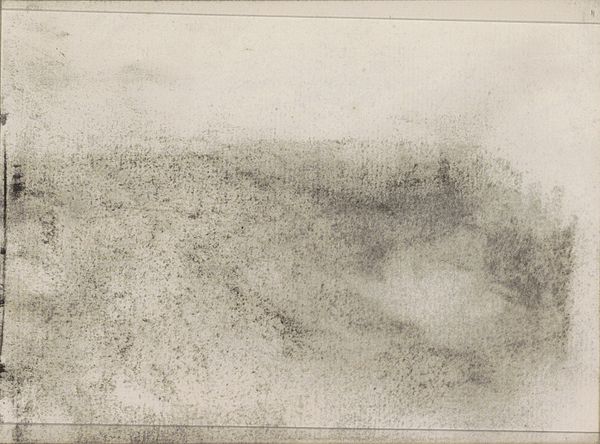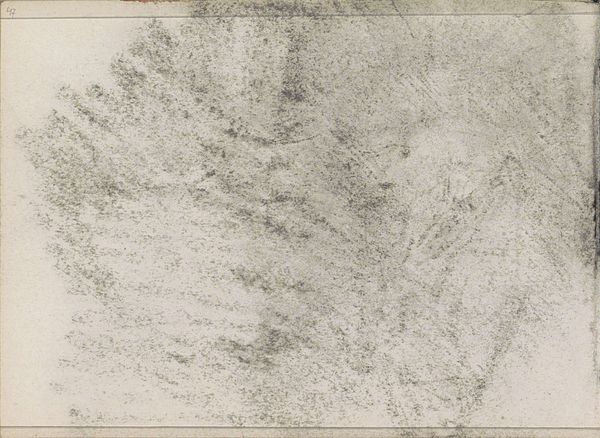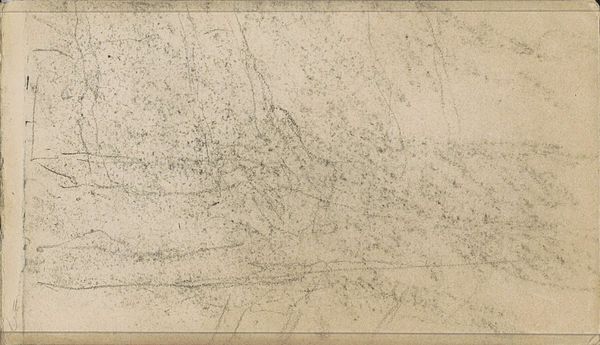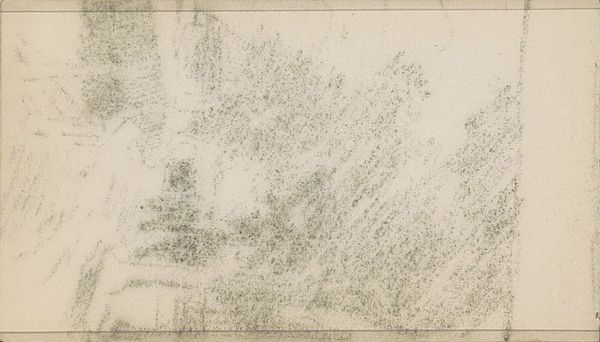
drawing, pencil
#
drawing
#
pencil sketch
#
landscape
#
etching
#
pencil
#
realism
Copyright: Rijks Museum: Open Domain
Curator: What a delicate work! This is entitled "Abklatsch van de krijttekening op pagina 29 verso," made by Anton Mauve sometime between 1876 and 1879. The piece seems to be a pencil sketch or, perhaps, an etching of a landscape. Editor: My immediate reaction is one of sparseness, of open fields, or even mist over water. The textures are so light and varied, yet there is an overarching feeling of emptiness. Curator: It's fascinating how Mauve uses the pencil, or etching tool, to create this atmospheric perspective. It speaks to the influence of the Hague School and their focus on capturing the nuances of the Dutch landscape and rural life. Were these depictions reflective, perhaps, of social movements? How did people from marginalized communities view the landscape, for instance? Editor: Agreed. The materials themselves suggest something important: pencil, a readily available and inexpensive tool, capable of immense detail. This accessibility extends to the subject as well—landscape. Mauve presents not some ideal, unattainable vision but land, labor, materiality. How was this image transferred, what sort of labor did its making require, and for what intended consumer? Curator: Indeed. I’m especially interested in the word "Abklatsch" in the title, implying a copy or an impression. It prompts me to consider the work as an act of reproduction, which raises the critical question of originality. Moreover, if the landscape is a site of labor, and it often is, where are the laborers? Editor: Precisely! We must examine the physical making, distribution, and interpretation of art in terms of class and production to deconstruct hierarchies in art appreciation and production itself. That elision of the people laboring over the earth says much about perspective and who it privileges. Curator: Considering those questions adds a new, complex layer to appreciating the work, and for situating it within broader social narratives. Editor: Absolutely, focusing on those material details reframes the artistic conversation into something vital, grounding artistic production and reception in material realities.
Comments
No comments
Be the first to comment and join the conversation on the ultimate creative platform.
